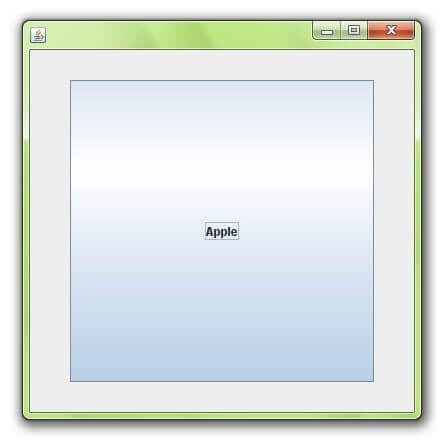CardLayout类以这样的方式管理组件:一次仅可见一个组件。它将每个组件都视为卡, 这就是为什么它被称为CardLayout的原因。
CardLayout类的构造方法
- CardLayout():创建水平和垂直间隙为零的卡片布局。
- CardLayout(int hgap, int vgap):创建具有给定水平和垂直间距的卡片布局。
CardLayout类的常用方法
- public void next(Container parent):用于翻转到给定容器的下一张卡片。
- public void previous(Container parent):用于翻转到给定容器的上一张卡片。
- public void first(Container parent):用于翻转到给定容器的第一张卡片。
- public void last(Container parent):用于翻转到给定容器的最后一张卡片。
- public void show(Container parent, String name):用于翻转到具有给定名称的指定卡。
CardLayout类的示例

import java.awt.*;
import java.awt.event.*;
import javax.swing.*;
public class CardLayoutExample extends JFrame implements ActionListener{
CardLayout card;
JButton b1, b2, b3;
Container c;
CardLayoutExample(){
c=getContentPane();
card=new CardLayout(40, 30);
//create CardLayout object with 40 hor space and 30 ver space
c.setLayout(card);
b1=new JButton("Apple");
b2=new JButton("Boy");
b3=new JButton("Cat");
b1.addActionListener(this);
b2.addActionListener(this);
b3.addActionListener(this);
c.add("a", b1);c.add("b", b2);c.add("c", b3);
}
public void actionPerformed(ActionEvent e) {
card.next(c);
}
public static void main(String[] args) {
CardLayoutExample cl=new CardLayoutExample();
cl.setSize(400, 400);
cl.setVisible(true);
cl.setDefaultCloseOperation(EXIT_ON_CLOSE);
}
} srcmini
srcmini
评论前必须登录!
注册